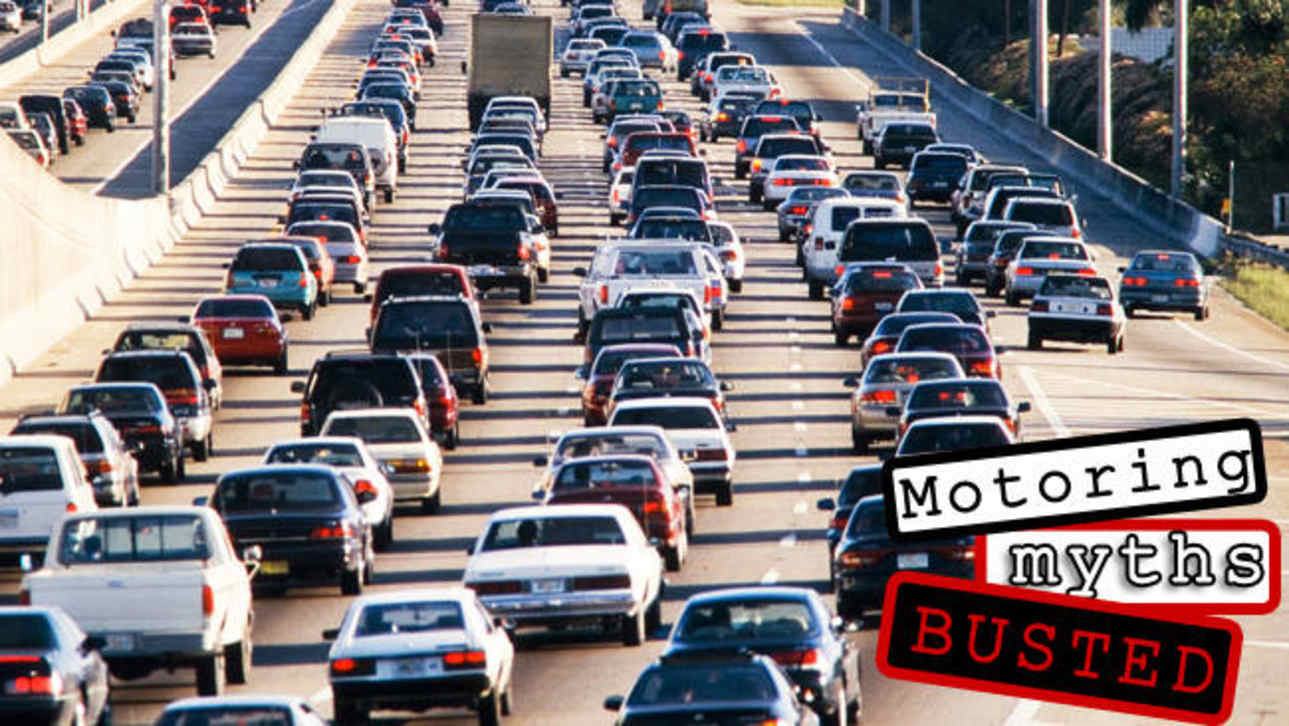Some of these myths are perpetuated as tales and tips passed on from a well-meaning grandfather or pub mate. Some might be amusing to those who know better. But to those who don't, it can be costly in repairs and maintenance and it can be dangerous with injury or worse as a result.
Even what might have been handy advice a few decades ago could no longer be suitable for the modern motor car.
I recall seeing years ago a guy stopped on the roadside in a country town letting air out of the tyres on his packed car. Why? Because when you drive, the tyres get hotter and the air pressure in them increases, so he was bringing them back to pressure.
Wrong. The recommended pressures take that into account. That's why the pressures should be checked when the tyres are cold. Letting air out when the tyres are hot and with more driving to go will only increase the chance of a blow-put because the tyre wall will flex too much.
One man when driving quickly along a twisty road shoved his foot down on the clutch for the tighter corners. Why? ``To stop the wheels from spinning or sliding.'' Again wrong: the sudden disengagement of power can cause snap oversteer (a tail slide).
Motoring organisation the RAA has compiled a series of examples of motoring myths and says why they are wrong. More than an idiots' guide to running a car, being aware of this stuff can avoid expensive repairs and crashes.
Servicing, warranties and maintenance
| MYTH | BUSTED! |
| If a car uses green coolant it can be topped up with any other green coolant. | Colour is not a good indicator of the coolants properties, as coolants are made up of varying chemicals. If mixed with another brand an adverse chemical reaction could occur that blocks up the cooling system. |
| A car's fuel injection system should be serviced every 30,000km. | The majority of car manufacturers don't recommend fuel injection servicing. |
| My coolant is five years old but looks all right so should protect the engine fine. | Some engine coolants can lose their ability to protect the engines components within a reasonably short time. Your coolant should be tested each service, or as per the manufacturers recommendations, and flushed and renewed when required. |
| The brake fluid will be fine in a three-year-old car that has travelled only 20,000km. | Brake fluid attracts moisture over time, lowering its boiling point and reducing its efficiency. It's generally recommended to replace your brake fluid every two years. |
Tyres and brakes
| MYTH | BUSTED! |
| If you lock the brakes and skid the tyres, the car will stop quicker. | A vehicle will stop in a shorter distance if the tyres don't skid, hence the benefits of anti-lock brake system (ABS). |
| My tyres still have 1.5-mm of tread left, so they're not worn yet. | 1.5mm is the minimum legal tread depth of tyres and need to be replaced at this point. |
| You need to inflate your tyres to the pressure shown on the tyre's sidewall. | The figure shown on the tyre itself is the maximum pressure it can safely hold, not the manufacturer's recommendation: this is usually found on a door jamb sticker, in the glove box or under the sun visor. |
Fuel
| MYTH | BUSTED! |
| Diesel cars can run on chip fat. | Recycling your vegetable oil as biodiesel might work in the old farm tractor but in modern diesel engines it can damage the fuel pump and injectors. Only when specially treated can you use a small amount mixed with regular diesel, but its best to check with your manufacturer, especially if the car is under warranty. |
| I don't need to use the petrol in my dual-fuel car because it has a gas head. | Most dual-fuel systems start the car on petrol, and then switch to gas. Not running the car intermittently on petrol will result in failure of the fuel system. |
| Hybrid cars can only be recharged at night. | Regardless of day or night, a hybrid's electric battery doesn't need to be manually recharged. This is done on the road by the conventional petrol engine and from the regenerating braking system. (A plug-in electric vehicle is recharged from a power point.) |
Accessories
| MYTH | BUSTED! |
| Dishwashing and laundry detergents are good for washing the car. | Detergent can strip a car's wax finish and leave behind a dirt-trapping residue. Its best to use a specially formulated car wash liquid. |
| Car window tinting doesn't peel off. | If aftermarket window tinting is poorly applied or exposed to the sun for long periods of time it can potentially peel off. That's why its recommended to use a reputable operator who offers a lifetime warranty. |
| Its simple to match metallic or faded paint during a crash repair. | This is quite difficult to do, requiring considerable skill and experience from the tradesperson holding the spray gun. |
| Interior protection is a necessity. | This is an optional extra. These days, materials used for vehicle interiors are more durable and we have access to good quality fabric cleaners. |
| There's no need to wear protective clothing riding my scooter; its maximum speed is 60 km/h. | Coming off a scooter in an accident at 60 km/h will still cause substantial injury to the body, making protective clothing a must. |
Under the bonnet
| MYTH | BUSTED! |
| You need to warm up the engine before driving off. | With fuel-injection systems in modern cars it's no longer necessary to let the engine idle before setting off its only wasting money and time. |
| If you buy an expensive European car, nothing will go wrong with it. | Even the most expensive vehicles can experience faults and break downs. |
| The louder the exhaust the better the car will go. | A loud exhaust could be a sign of insufficient back pressure, which is required for correct engine performance. |
| If an automatic, six-cylinder Falcon can legally tow 2300kg, with the extra power a manual V8 Falcon could legally tow the same amount. | A number of factors determine the towing capacity of a vehicle. In this case, the clutch reduces the towing capacity to 1200kg. |
Source: The RAA



.jpg)

.jpg)
.jpg)


.jpg)
.jpg)
.jpg)








Comments